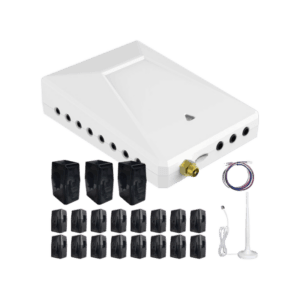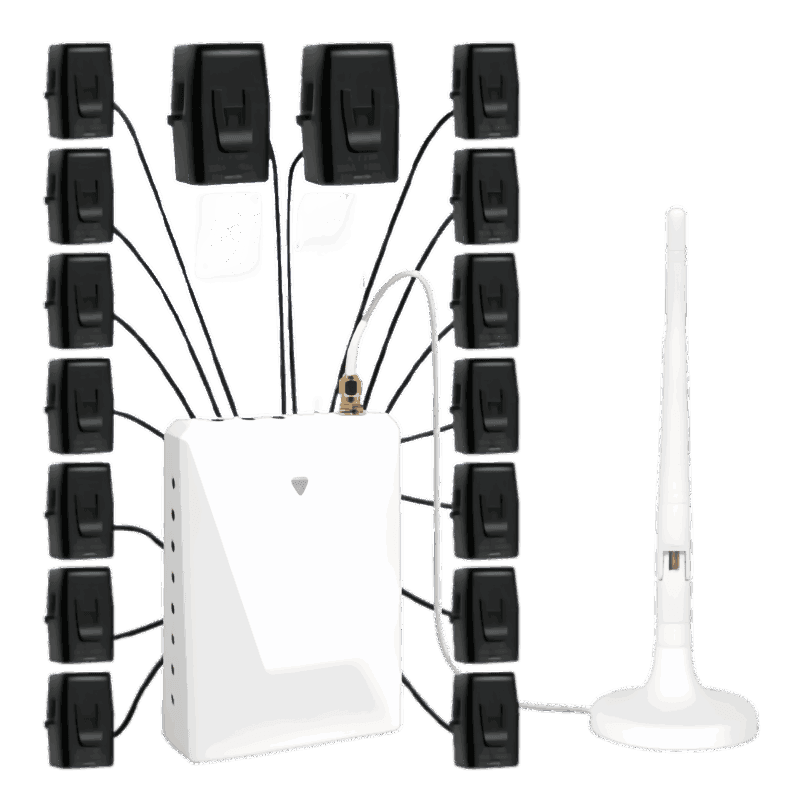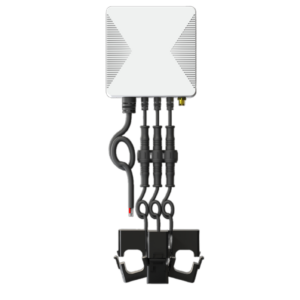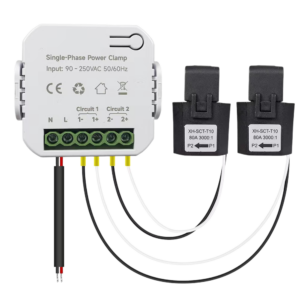Electrical panels are a critical part of any power distribution system, ensuring safe and efficient delivery of electricity. The panel shown in the image is a 120/208V three-phase electrical panel, commonly found in commercial buildings, multi-unit residences, and industrial facilities.
This blog will:
✅ Analyze the structure and wiring of this three-phase panel
✅ Compare 120/208V to 120/240V systems
✅ Identify potential code violations or wiring issues
✅ Explain how smart energy monitoring can optimize power usage
1. Breakdown of This Electrical Panel
This panel follows a three-phase four-wire 120/208V configuration, meaning it provides:
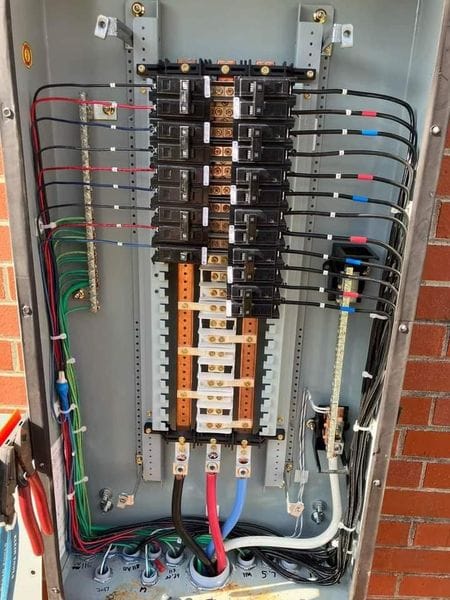
- 120V single-phase power (L1, L2, or L3 to Neutral) for outlets and lighting.
- 208V power (L1-L2, L2-L3, L1-L3) for larger equipment like HVAC, motors, and water heaters.
- Balanced three-phase 208V loads for industrial machines, elevators, and pumps.
Key Components Identified in the Image
1️⃣ Incoming Power Supply (Bottom Cables)
- Black (L1), Red (L2), and Light Blue (L3): The three hot phase wires.
- White: Neutral wire, which allows for 120V operation.
- Bare Copper or Green: Ground wire, for safety.
2️⃣ Busbars (Power Distribution)
- Three Hot Busbars (L1, L2, L3) → Alternating connections for balanced phase loads.
- Neutral Busbar (White-Wired) → Serves all 120V circuits.
- Ground Busbar (Green/Bare-Wired) → For grounding and safety.
3️⃣ Circuit Breakers
- Single-Pole Breakers (120V Loads) – Used for standard lighting and outlets.
- Double-Pole Breakers (208V Loads) – Used for water heaters, HVAC, and kitchen equipment.
- Three-Pole Breakers (208V Three-Phase Loads) – Used for commercial motors, elevators, and large industrial equipment.
2. Wiring Diagram for This Electrical Panel
To better visualize the connections, here’s a Mermaid diagram of how this panel distributes power:
--- title: "120/208V Three-Phase Four-Wire Panel" --- graph TD; A["Utility Transformer (Three-Phase)"] -->|"L1 (120V to Neutral)"| B["Main Panel"] A -->|"L2 (120V to Neutral)"| B A -->|"L3 (120V to Neutral)"| B B -->|"L1 to Neutral (120V)"| C["Standard Outlets & Lighting"] B -->|"L2 to Neutral (120V)"| D["Commercial Loads"] B -->|"L3 to Neutral (120V)"| E["Office & IT Equipment"] B -->|"L1 to L2 (208V)"| F["Small HVAC Units"] B -->|"L2 to L3 (208V)"| G["Pumps & Motors"] B -->|"L1 to L3 (208V)"| H["Elevators & Industrial Machines"]
3. How to Install WattNet-3 and WattPanel-3X in a 120/208V Three-Phase Electrical Panel?
WattNet-3 and WattPanel-3X are designed for monitoring three-phase electrical systems, such as the 120/208V panel shown in your image. Proper installation ensures accurate real-time power monitoring, load balancing, and energy efficiency tracking.
1) Choosing the Right Meter for This Panel
| Smart Meter | Best For | Compatible Voltage System |
|---|---|---|
| WattNet-3 | General three-phase energy monitoring | 120/208V Three-Phase (Wye) |
| WattPanel-3X | Advanced multi-channel load monitoring | 120/208V, 277/480V Three-Phase |
📌 Since this panel is a 120/208V three-phase system, both WattNet-3 and WattPanel-3X are suitable options.
2) Required Installation Tools & Components
✅ Tools:
🔹 Screwdriver set
🔹 Insulation-resistant gloves
🔹 Clamp-on current transformers (CTs) (included with the meters)
🔹 Electrical tester or multimeter
🔹 Wi-Fi connection (for smart integration)
✅ Components:
🔹 WattNet-3 or WattPanel-3X Smart Meter
🔹 CT clamps (Current Transformers) for L1, L2, and L3
🔹 Voltage reference wires (for measuring phase voltage)
🔹 Neutral wire connection
3) Step-by-Step Installation Guide
Step 1: Safety First – Turn Off Power
1️⃣ Locate the main breaker and switch it OFF.
2️⃣ Verify power is disconnected using a multimeter.
Step 2: Install CT Clamps for Current Measurement
CT (Current Transformer) Clamps are used to measure the amperage flowing through each phase.
📌 How to Install CT Clamps:
1️⃣ Open the panel and identify L1 (Black), L2 (Red), and L3 (Blue).
2️⃣ Clip a CT clamp around each of the three-phase conductors.
3️⃣ Ensure the arrow on the CT clamp is pointing toward the load (not toward the main breaker).
--- title: "Installing CT Clamps on a Three-Phase Panel" --- graph TD; A["Main Breaker (OFF)"] --> B["L1 (Black) with CT Clamp"] A --> C["L2 (Red) with CT Clamp"] A --> D["L3 (Blue) with CT Clamp"] B --> E["Smart Meter - WattNet-3"] C --> E D --> E
✅ Tip: Secure the CT clamps firmly and avoid placing them near other high-power conductors to prevent interference.
Step 3: Connect Voltage Reference Wires
Voltage reference wires measure the actual phase voltage in real-time.
📌 Voltage Wire Connections (For 120/208V Wye Systems):
1️⃣ L1 (Black) → Voltage Input 1 on the smart meter.
2️⃣ L2 (Red) → Voltage Input 2 on the smart meter.
3️⃣ L3 (Blue) → Voltage Input 3 on the smart meter.
4️⃣ Neutral (White) → Neutral Input on the smart meter.
✅ Tip: Use appropriately rated wires and secure them using screw terminals.
Please have a look the Installation diagram below:
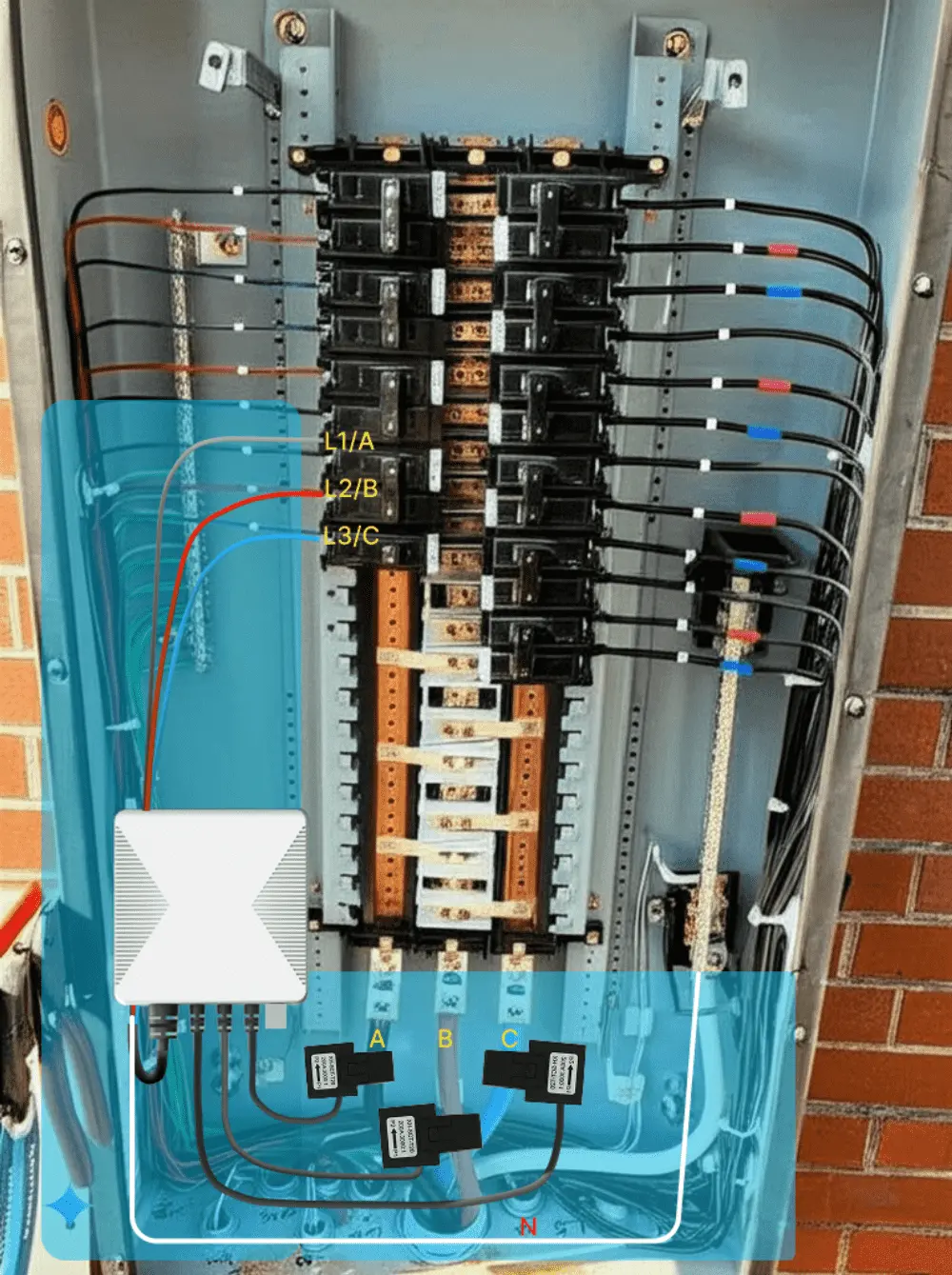
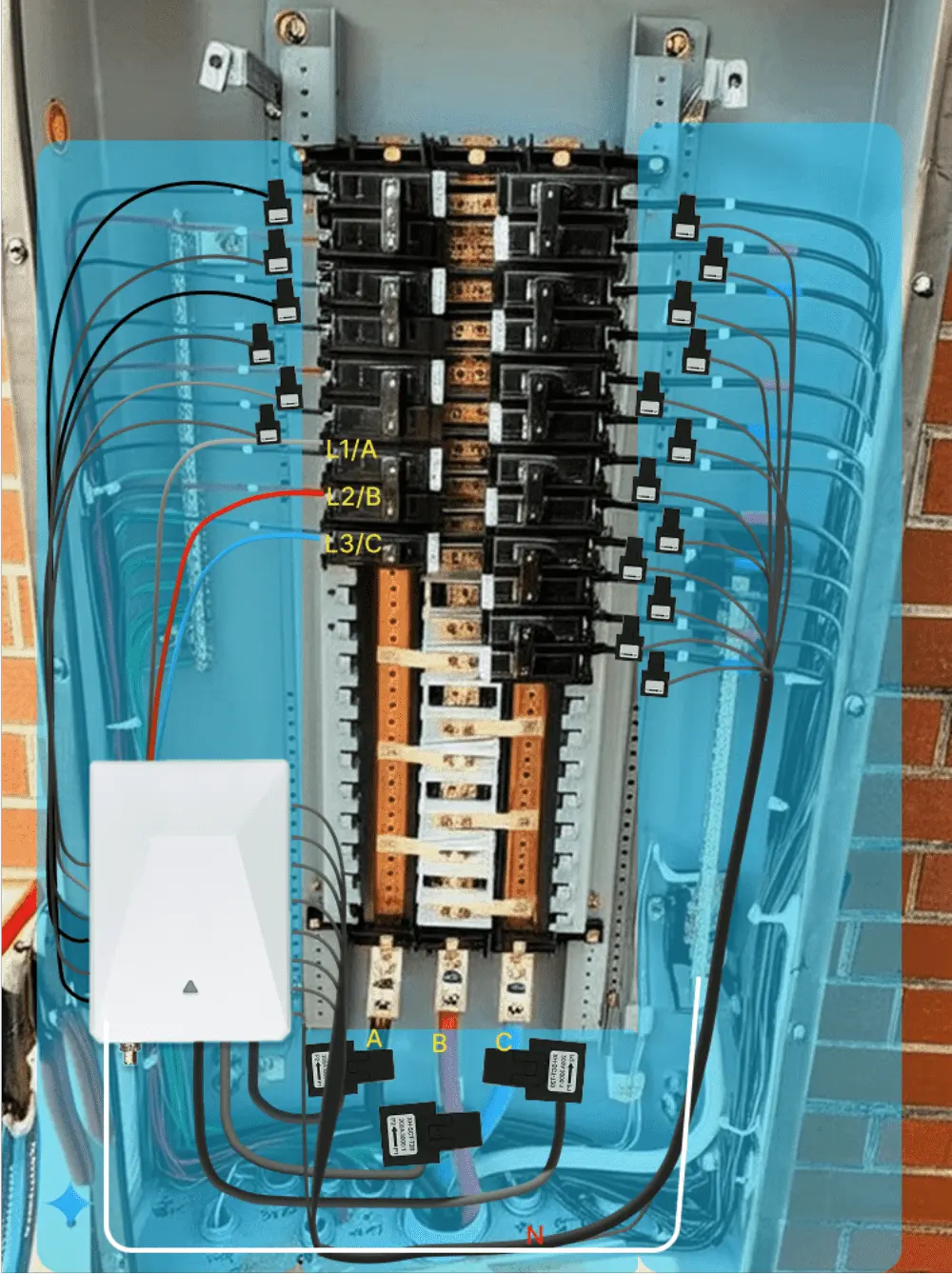
Step 4: Connect to Wi-Fi & Configure the Smart Meter
Once the physical connections are complete:
1️⃣ Restore power to the panel.
2️⃣ Connect WattNet-3 or WattPanel-3X to Wi-Fi (via the mobile app).
3️⃣ Calibrate CT readings to ensure accurate energy tracking.
4️⃣ Label and configure circuits in the Grus Energy Monitoring Dashboard.
✅ Now, you can monitor power usage in real time!
4. How Smart Energy Monitors Can Improve Safety & Efficiency
Installing a smart energy meter can help identify imbalances, reduce power waste, and improve overall system efficiency.
📌 Benefits of Using Smart Meters: ✅ Identify power imbalances – Ensure even load distribution across all phases.
✅ Real-time energy tracking – Monitor energy usage in live dashboards.
✅ Prevent overloading & inefficiencies – Detect equipment that draws excessive power.
✅ AI-powered insights for energy savings – Optimize HVAC, lighting, and industrial power usage.
After installation, what can you track?
✅ Live energy usage per phase (L1, L2, L3)
✅ Power imbalances & phase efficiency
✅ Peak demand times & appliance energy consumption
✅ Cost estimation and energy-saving recommendations
--- title: "Smart Monitoring with Grus Smart Meters" --- graph TD; A["WattNet-3 / WattPanel-3X"] -->|Real-Time Data| B["Grus Energy Dashboard"] B -->|Analyzes Energy Usage| C["Detects Power Imbalances"] B -->|Optimizes Load Efficiency| D["Reduces Energy Costs"] B -->|Tracks Solar & Battery Performance| E["Integrates with Smart Home"]
5. Why This Analysis Matters
This 120/208V three-phase panel is a standard setup for commercial buildings, but proper labeling, compliance, and load balancing are critical for safe operation.
Key Takeaways
✅ 120/208V three-phase systems support both 120V and 208V loads.
✅ This panel is ideal for commercial buildings, offices, and multi-unit residences.
✅ Potential compliance issues like improper neutral bonding and load imbalances should be addressed.
✅ Smart meters help track and optimize power distribution efficiently.
🚀 Upgrade your building's energy monitoring with Grus Smart Meters today!
